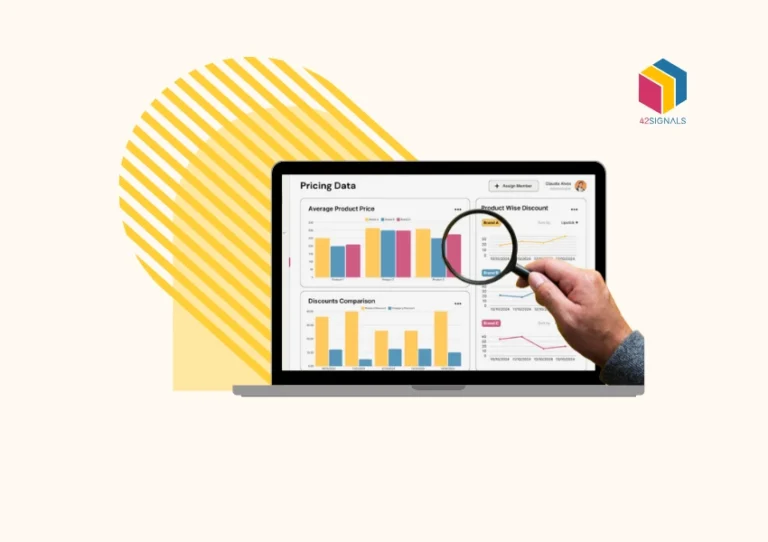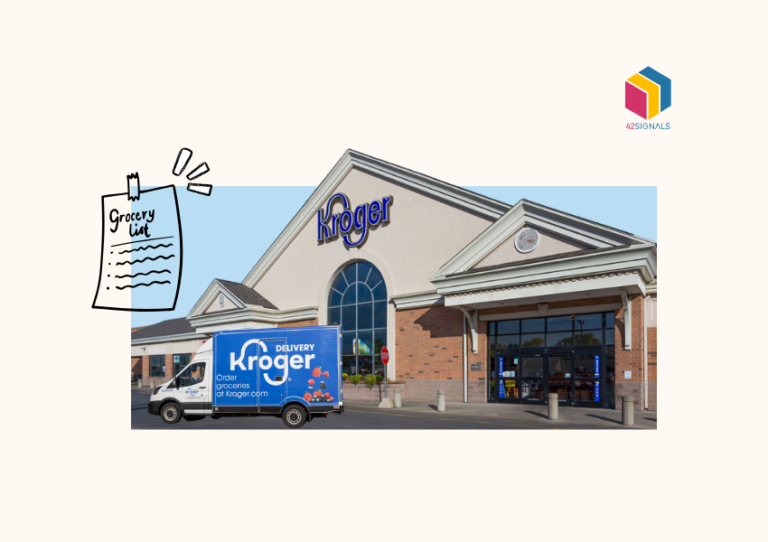With numerous brands vying for customers’ attention, providing personalized, seamless, and satisfying interactions can make all the difference in retaining existing clients and attracting new ones.
A proven way of elevating customer experience is via customer sentiment analysis. Let’s understand how it helps, its benefits, and what practical strategies are needed to implement it effectively in your organization.
What is Customer Sentiment Analysis?

Image Source: Express Analytics
Customer sentiment analysis refers to the process of extracting insights from customer feedback, reviews, and social media posts using natural language processing (NLP) techniques and machine learning algorithms. By analyzing customer emotions, opinions, and attitudes towards products or services, businesses gain valuable insights into their strengths, weaknesses, and areas requiring improvement.
Consequently, organizations can tailor their offerings, communication styles, and support approaches to meet customer needs better and foster long-term loyalty.
The Benefits of Listening to Customers

Image Source: Walk Me
- Enhanced customer satisfaction
- Improved product development
- Informed decision-making
- Increased revenue
- Reduced churn rates
- Real-time identification of positive, negative, or neutral sentiments
- Quick detection of patterns, assessment of overall satisfaction levels, and pinpointing specific pain points
- Contextual awareness, staying up-to-date with market developments and competitor activities
- Targeted communications based on individual emotional states, strengthening relationships, fostering trust and credibility
- Alignment of product features and designs with user expectations, improving user experience
- Empathy building, conflict resolution skills, and effective engagement with diverse emotional states
- Swift adaptation to evolving consumer preferences and behaviors, maintaining sustained relevance and growth.
Strategies to Elevate Customer Experience with Customer Sentiment Analysis
1. Collect and Analyze Data Systematically
Begin by gathering customer data from various sources such as email correspondence, online surveys, review sites, social media platforms, and contact center recordings. Ensure you employ advanced NLP tools and text analytics software to categorize and interpret vast volumes of information efficiently. This approach enables you to detect patterns, assess overall customer satisfaction levels, and pinpoint specific pain points quickly.

Image Source: Excellence Assured
To begin –
- Use CRM systems, survey tools, or chatbots to gather structured feedback after purchases or service encounters.
- Implement voice-of-the-customer programs that capture customer thoughts and feelings expressed during phone calls or live chats.
- Set up web scrapers or APIs to collect unstructured data from review websites, blogs, or social media platforms.
For instance, a retailer may use a post-purchase survey asking customers about their shopping experience and rating factors like ease of navigation, checkout speed, and product quality on a scale. They might also ask open-ended questions soliciting additional comments or suggestions for improvement.
2. Monitor Social Media Channels Regularly
Given the ubiquity of social media platforms, keeping tabs on what customers say about your brand online is essential. Social listening tools allow you to track mentions, keywords, and hashtags related to your company, enabling real-time identification of positive, negative, or neutral sentiments. Additionally, monitoring industry-specific conversations provides contextual awareness, helping you stay abreast of market developments and competitor activities.

Image Source: Sprout Social
To begin –
- Deploy social listening tools to monitor mentions, keywords, and hashtags associated with your brand.
- Engage with users who share content related to your products or services, thanking promoters while addressing critics constructively.
- Participate in discussions surrounding industry topics or events, demonstrating thought leadership and expertise.
A cosmetics company could follow popular beauty influencers and trendsetters on Instagram, observing which products receive high praise or criticism. The firm can then adjust production schedules, formulations, or packaging accordingly to address emerging trends.
3. Personalize Communication Based on Sentiment Insights:
Armed with sentiment analysis findings, tailor your messaging to resonate with individual customers’ emotional states. For instance, if a client expresses dissatisfaction via email, respond promptly, acknowledge their concerns, and propose solutions proactively. Similarly, reward loyal advocates with exclusive offers or incentives, reinforcing their affinity towards your brand. Such targeted communications strengthen relationships, fostering trust and credibility.

Image Source: Content Stack
To begin –
- Segment audiences according to their emotional state, crafting messages tailored to each group’s unique needs and desires.
- Address issues raised by unhappy customers proactively, offering assistance or compensation when appropriate.
- Reward loyal fans with special discounts, early access to new releases, or exclusive perks to reinforce their connection to the brand.
A travel agency may send emails to recent bookers acknowledging any challenges faced during trip planning and proposing alternative options. Meanwhile, repeat clients would receive customized recommendations based on past trips, accompanied by personalized greetings and gratitude for their continued patronage.
4. Integrate Sentiment Analysis into Product Development Cycles
Leverage customer insights gleaned from sentiment analysis to inform product design decisions. Identify recurring themes, suggestions, and complaints pertaining to functionality, usability, or aesthetics, integrating relevant improvements during subsequent iterations. Furthermore, involve focus groups comprising satisfied customers to test and validate enhancements before launching them publicly, ensuring alignment with user expectations.

Image Source: Upsilon
To begin –
- Establish cross-functional teams involving representatives from sales, marketing, engineering, and customer success to ensure holistic consideration of customer perspectives throughout the ideation, design, testing, and deployment phases.
- Develop personas representing different types of users, capturing their goals, motivations, frustrations, and preferred communication channels.
- Track usage metrics and user behavior within applications or websites, identifying bottlenecks, abandoned workflows, or underutilized features warranting enhancement or removal.
A fitness app developer might create profiles encompassing age ranges, activity levels, and lifestyle choices, designing workout plans catering specifically to each segment’s requirements. During beta testing, they could elicit detailed feedback from participants regarding interface intuitiveness, exercise variety, and gamification elements to incorporate modifications before full release.
5. Train Employees on Handling Sentiment Analysis Outcomes
Empower staff members across departments – particularly those interfacing directly with customers – to comprehend and act upon sentiment analysis results. Organize training sessions covering best practices for engaging with diverse emotional states, de-escalation techniques, empathy-building exercises, and conflict-resolution skills. Encourage regular knowledge sharing and collaboration among teams, promoting a culture centered around customer centricity.

Image Source: Oer Commons
To begin –
- Offer workshops focused on active listening, emotion recognition, and empathetic responses to improve employee interaction skills.
- Share case studies highlighting successful resolutions of challenging situations resulting from negative customer sentiment.
- Create guidelines outlining escalation procedures and protocols for dealing with critical incidents threatening customer goodwill or reputational damage.
A call center supervisor could lead role-playing exercises simulating disgruntled clients voicing frustration due to billing errors or shipping delays. Agents would learn techniques for diffusing tension, finding common ground, and collaboratively problem-solving to restore satisfaction and maintain long-term relationships.
6. Continuously Iterate and Optimize
Lastly, recognize that perfecting customer experience is an ongoing endeavor rather than a one-time achievement. Periodically reassess your sentiment analysis methodologies, tools, and processes, incorporating stakeholder feedback and technological advancements along the way. Adapting swiftly to evolving consumer preferences and behaviors ensures sustained relevance and growth in today’s dynamic business environment.
To begin –
- Schedule periodic audits evaluating the effectiveness of current sentiment analysis efforts, noting opportunities for improvement or expansion.
- Stay updated on advances in AI technologies, NLP models, and predictive analytics capabilities, considering integration where applicable to streamline operations or augment accuracy.
- Solicit input from frontline personnel interacting daily with customers, valuing their firsthand observations and ideas for enhancing overall performance.
A fintech startup could engage in annual benchmarking against peers and established players alike, measuring progress towards defined KPIs concerning net promoter scores, conversion rates, or average order values. As part of continuous optimization, they may experiment with novel visualization tools or dashboard layouts to facilitate quicker comprehension and actionable insights derived from complex datasets.
Conclusion
Customer sentiment analysis is a perfect tool to deliver superior customer experiences that drive business growth and sustainability.
For businesses interested in staying on top, investing time, resources, and energy into mastering customer sentiment analysis should remain a top priority.
If you liked this article, visit our blog and insights page.







